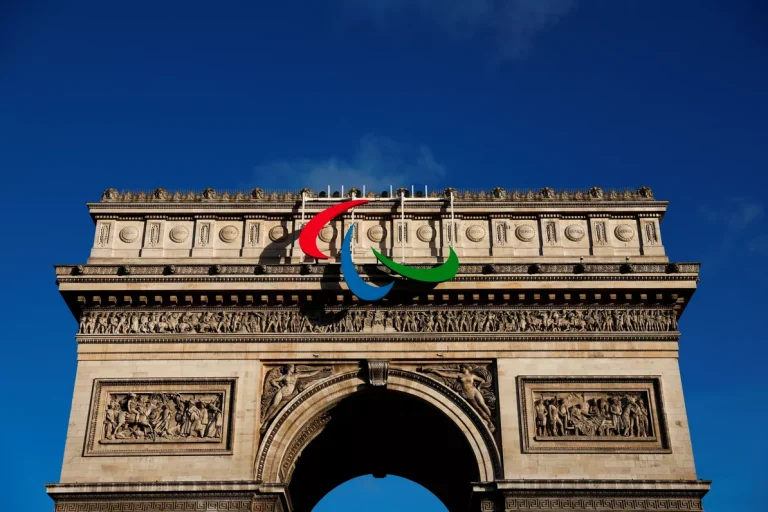An old railway track lined with trees, boasting grassy spaces to stretch out on, the fragrance of flowers wafting over paths, not to mention some rather strange birds…who says that the city has no more surprises in store?
Before embarking on this trip down old tracks and shades of the tropics, let’s take a detour via Montparnasse cemetery to find the final resting place of famous Parisians such as Jean-Paul Sartre and Simone de Beauvoir, Charles Baudelaire, Guy de Maupassant and Serge Gainsbourg.
Did you know that Rue Emile-Richard, which bisects the cemetery, is the only street in the entire capital without a single living inhabitant!
Starting point: Start at Vélib’ Station n°14002 Edgar Quinet–Raspail (with the Tour Montparnasse skyscraper behind you)
La Place de Séoul: a hidden rose garden

This circular plaza conceals a rose garden in full bloom (depending on the season, of course!) – what better way to begin our ride than with this delightful surprise, courtesy of Mother Nature? Surrounding us on every side is a magnificent glass façade, like a gigantic open-air mirror, which was designed by Spanish architect Ricardo Bofill in 1985. It’s the perfect protective wall for this little architectural gem in the shadow of the Tour Montparnasse skyscraper.
Église Notre-Dame du Travail: appearances can be deceptive
From the outside, there’s no hint of the quite unique architecture that awaits those who pass through this church’s doors: Notre-Dame du travail boasts an awe-inspiring inner metal framework with echoes of the world of heavy industry. Built between 1897 and 1902, this church was originally designed to serve the workers of the 14th arrondissement who had worked on the buildings erected during various Paris World Fairs. It also houses a number of stunning paintings depicting different trades and their patron saints.
From here on the route runs entirely along cycle paths.

The Gare de la petite ceinture railway station
Before leaving Paris proper, you’ll encounter an old station on the former railway line known as the ‘Petite ceinture’. This orbital line opened progressively from 1852 on, linking different Paris stations to freight and then passenger services. No longer in use, this station has been refurbished and several sections of the old line have been re-opened to walkers.
Malakoff: village vibes on the outskirts of Paris

We’ve now left Paris behind and we’re hurtling down the cobbled streets of Malakoff, a town which owes its name to the successful storming of the Russian-held Malakoff redoubt by French forces after a bitter struggle during the Siege of Sevastopol. To mark the taking of the tower on the redoubt and this French victory during the Crimean War, a replica of the tower was unveiled in the centre of this newly-established village in 1855.
This tower helped make the cabaret « À la tour de Malakoff » (at the Malakoff Tower) into a well-known local venue. Like other open-air cafés, it had opened up outside Paris’ city limits to avoid having to pay tax on the sale of alcohol.
Further along we discover the Fort de Vanves, one of the forts comprising the defensive ring built around Paris to protect it in the event of a siege. Even now, it’s still used by a French intelligence agency – photography is strictly forbidden!
Wall-to-wall art
As we continue on our way, the retaining wall for the TGV Atlantique high-speed railway line appears. Set into the wall itself are various sculptures, the best-known of which is ‘les bâtisseurs’, (the builders), an urban artwork created at the end of the 1980s by Yvette Vincent-Alleaume, composed of red and blue ceramic tiles; together with a dozen aluminium figures by Olivier Descamps, charting the various actions and stances involved in throwing the shot put and the discus. After this, we have ‘Promenade dans un musée imaginaire’ (a walk in an imaginary museum) by Béatrice Casadesus, which pays tribute to ‘snap-shots’ of small sections of works of visual art which have been reconstructed to look like raster graphics using rows of small ceramic squares.
The Promenade départementale des Vallons de la Bièvre, also called the Coulée Verte du sud parisien

What exactly is the Coulée Verte? It’s an old railway line that was originally built for the Paris-Chartres line. The First World War and then huge budget over-runs put an end to this project – much to the delight of cyclists who can leave Paris behind them via this lush-green corridor. It links the towns of Châtillon, Bagneux and Fontenay-aux-Roses.
Seeing double in the jungle?

Don’t worry if you hear the sound of unfamiliar birdsong, it just means that you’ve come across some ring-necked parakeets. These green-hued parrots, native to the tropics, are the descendants of escapees from a cargo shipment at Orly Airport in the 1970s. The colony has adapted very well to its new habitat and now offers more observant passers-by a fine spectacle.
The Parc de Sceaux: nobody does it quite like Le Nôtre

We finally arrive at our destination and can make ourselves comfortable in these magnificent grounds. Perfect for (an undoubtedly well-earned) picnic, this classic French-style formal garden was the jewel in the crown of this estate, owned by Colbert, Louis XIV’s Minister of Finance. The garden was designed by André Le Nôtre at the end of the 17th century at Colbert’s request and was completed by Colbert’s son, the marquis de Seignelay. Although the château built for Colbert was dismantled during the French Revolution for building material, it was replaced by a new construction in 1856. It has been home to the permanent collection of the Musée de l’Île-de-France since 1937. In 2013 the museum received a new name, the ‘Musée du Domaine Départemental de Sceaux’.
Why not take a look at the town centre (which is also where you’ll find the Vélib’ station)? Wander around its narrow streets and soak up its pleasant, village-like ambiance.
Arrival point: Vélib’ station n°23302 Parc de Sceaux -Centre-Ville


